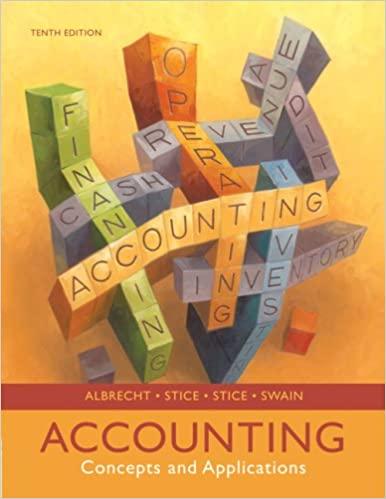Question
Cost-Benefit Analysis of Managerial Auditing Processes Cost-benefit analysis (CBA) is a systematic approach used to evaluate the potential costs and benefits associated with managerial auditing
Cost-Benefit Analysis of Managerial Auditing Processes
Cost-benefit analysis (CBA) is a systematic approach used to evaluate the potential costs and benefits associated with managerial auditing processes. It helps organizations assess the economic feasibility of investing in auditing activities by comparing the expected benefits to the costs incurred. Here's a detailed overview of the steps involved in conducting a cost-benefit analysis of managerial auditing processes:
1. Define Objectives:
The first step in conducting a cost-benefit analysis is to define the objectives of the managerial auditing processes. This involves identifying the specific goals and outcomes that the organization hopes to achieve through auditing activities, such as improving internal controls, enhancing financial reporting accuracy, or reducing the risk of fraud.
2. Identify Costs:
Next, the costs associated with implementing and maintaining the managerial auditing processes are identified. These costs may include personnel expenses, training costs, software and technology investments, external audit fees, and other overhead expenses related to auditing activities.
3. Quantify Benefits:
Once the costs are identified, the potential benefits of the managerial auditing processes are quantified. These benefits may include improved decision-making, enhanced organizational performance, reduced risk exposure, increased stakeholder confidence, and potential cost savings resulting from improved efficiency and effectiveness.
4. Assess Risks and Uncertainties:
In conducting a cost-benefit analysis, it's important to consider potential risks and uncertainties that may impact the expected benefits or costs of the auditing processes. This may include factors such as regulatory changes, technological advancements, market volatility, and unforeseen events that could affect the outcomes of auditing activities.
5. Calculate Net Present Value (NPV) and Return on Investment (ROI):
Using the information gathered on costs, benefits, and risks, organizations calculate the net present value (NPV) and return on investment (ROI) of the managerial auditing processes. NPV measures the difference between the present value of expected benefits and the present value of costs, while ROI calculates the ratio of net benefits to costs as a percentage.
6. Compare Alternatives:
Organizations may also evaluate different alternatives or scenarios for conducting managerial auditing processes to identify the most cost-effective approach. This may involve comparing in-house auditing capabilities to outsourcing options, evaluating the use of technology-enabled auditing tools, or assessing the frequency and scope of auditing activities.
7. Make Informed Decisions:
Based on the results of the cost-benefit analysis, organizations can make informed decisions about whether to invest in or continue investing in managerial auditing processes. If the expected benefits outweigh the costs and risks, organizations may choose to proceed with auditing activities, while considering ways to optimize resource allocation and maximize returns.
Question:
In conducting a cost-benefit analysis of managerial auditing processes, which step involves quantifying the potential benefits of auditing activities?
A) Defining objectives B) Identifying costs C) Assessing risks and uncertainties D) Quantifying benefits
Step by Step Solution
There are 3 Steps involved in it
Step: 1

Get Instant Access to Expert-Tailored Solutions
See step-by-step solutions with expert insights and AI powered tools for academic success
Step: 2

Step: 3

Ace Your Homework with AI
Get the answers you need in no time with our AI-driven, step-by-step assistance
Get Started


